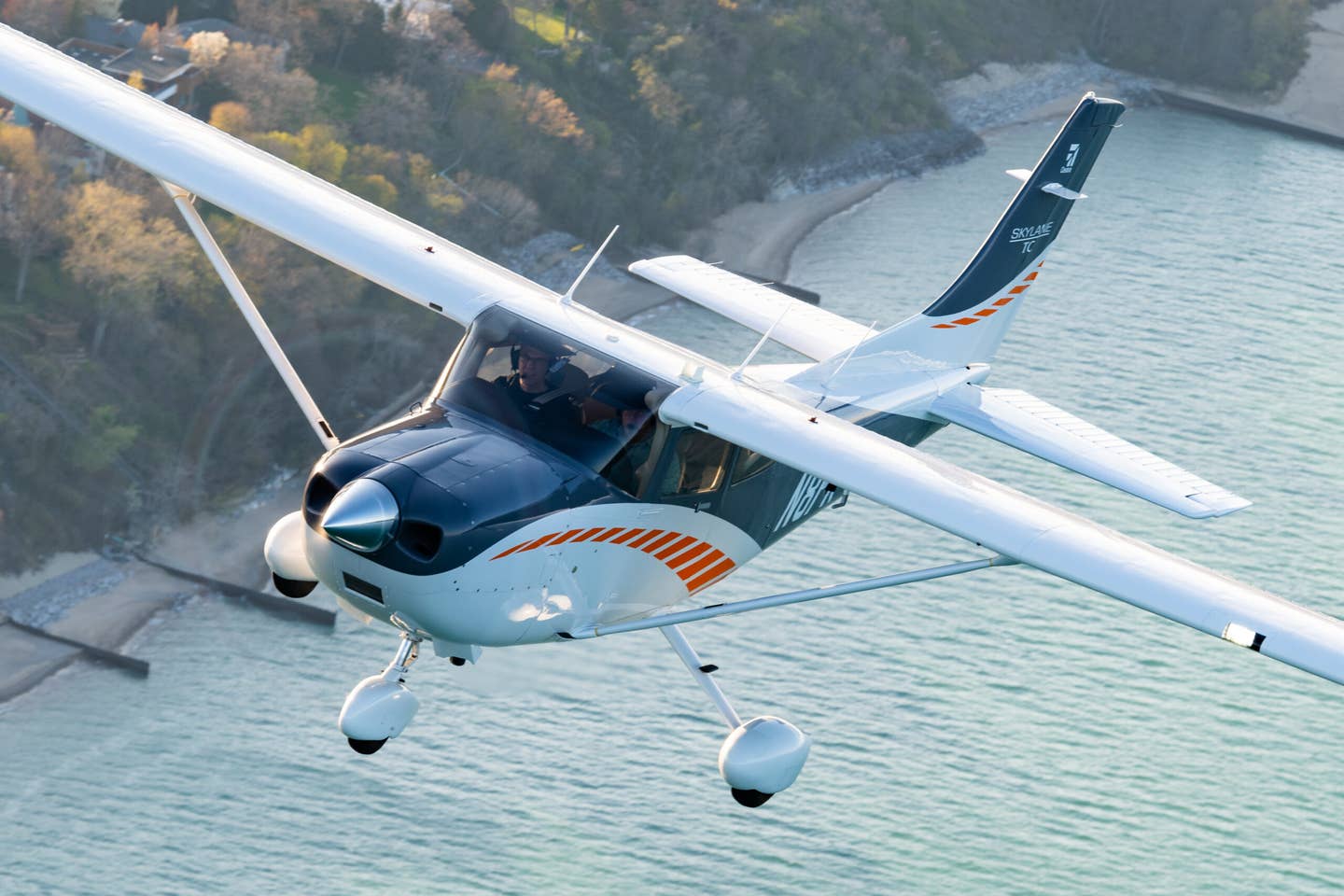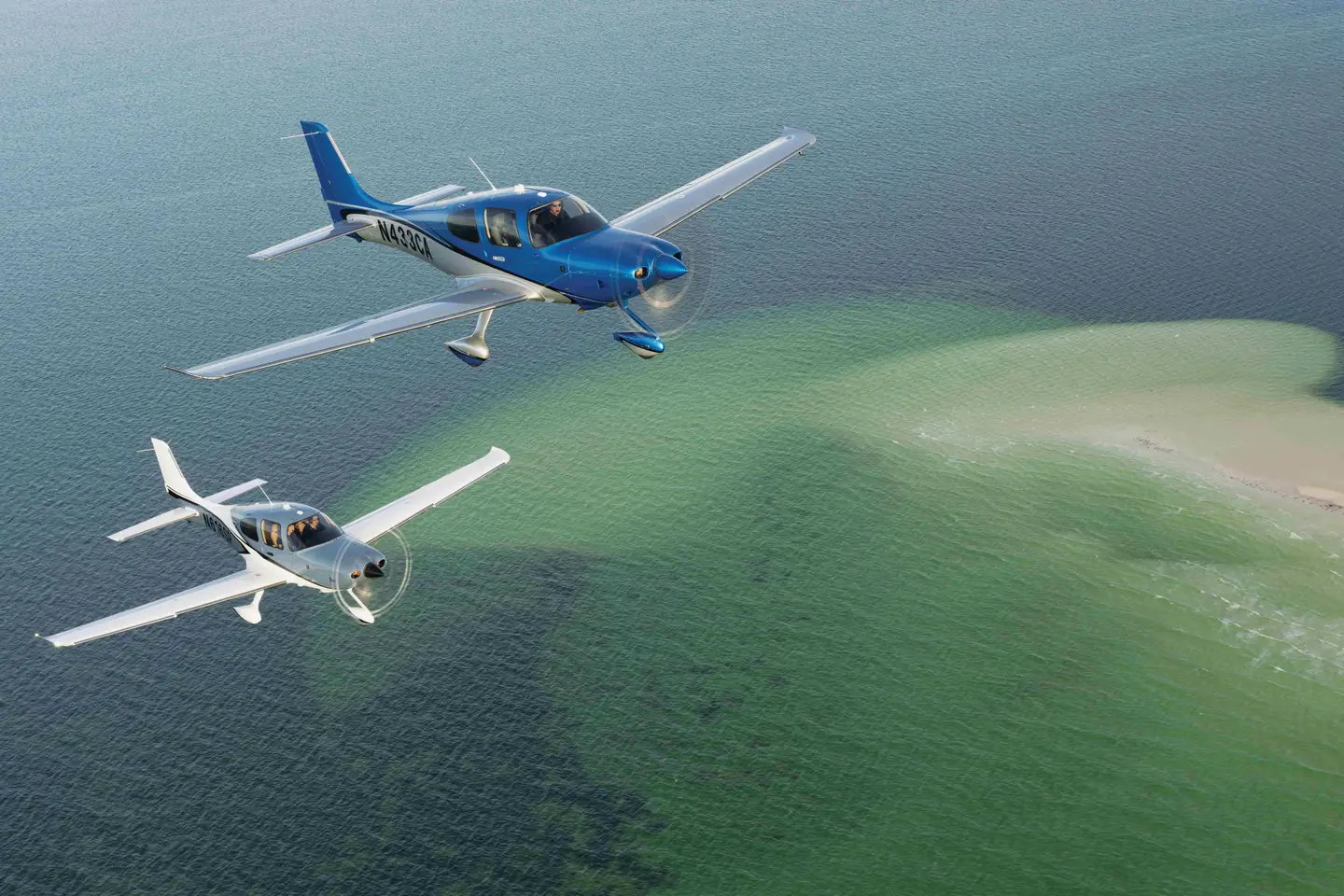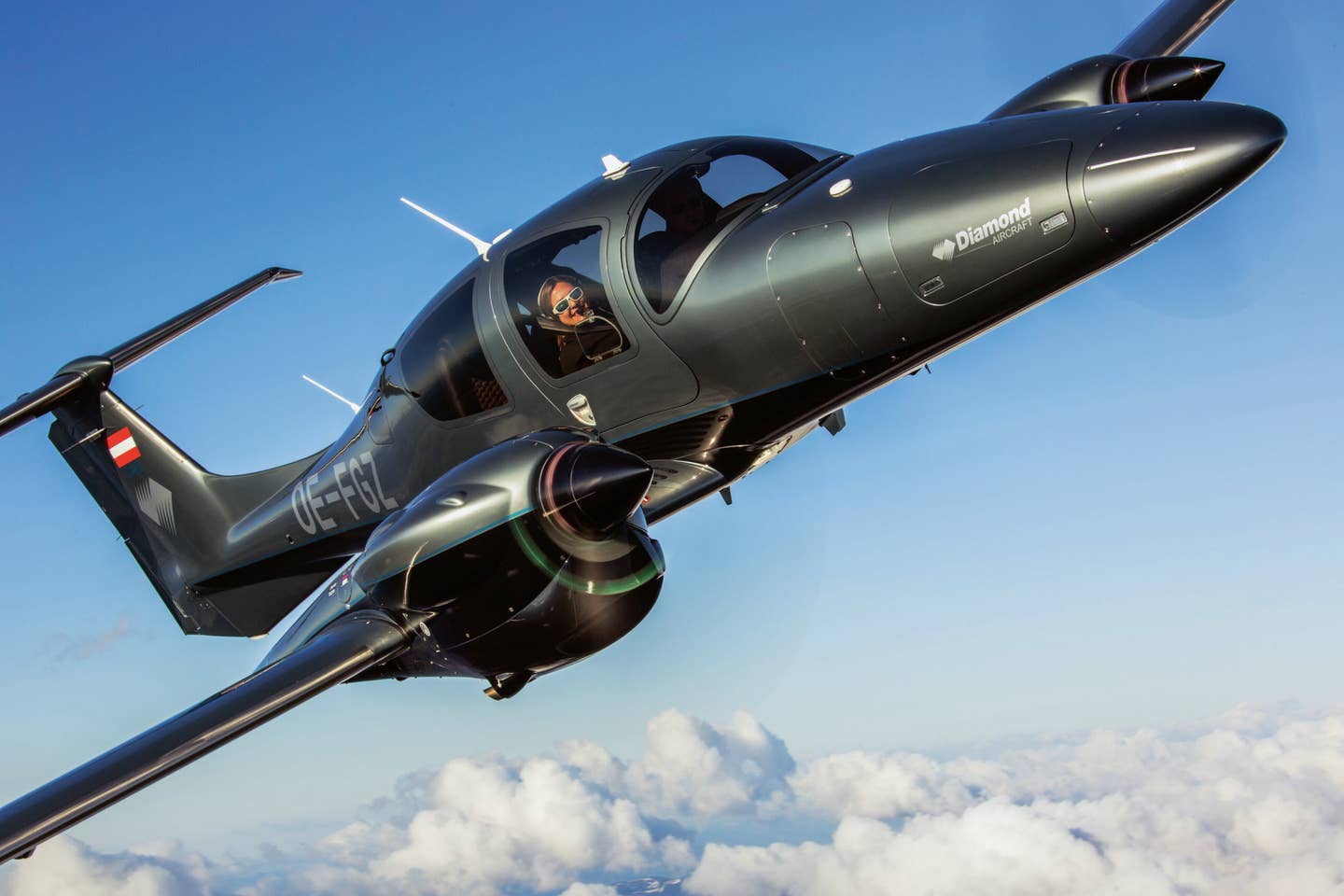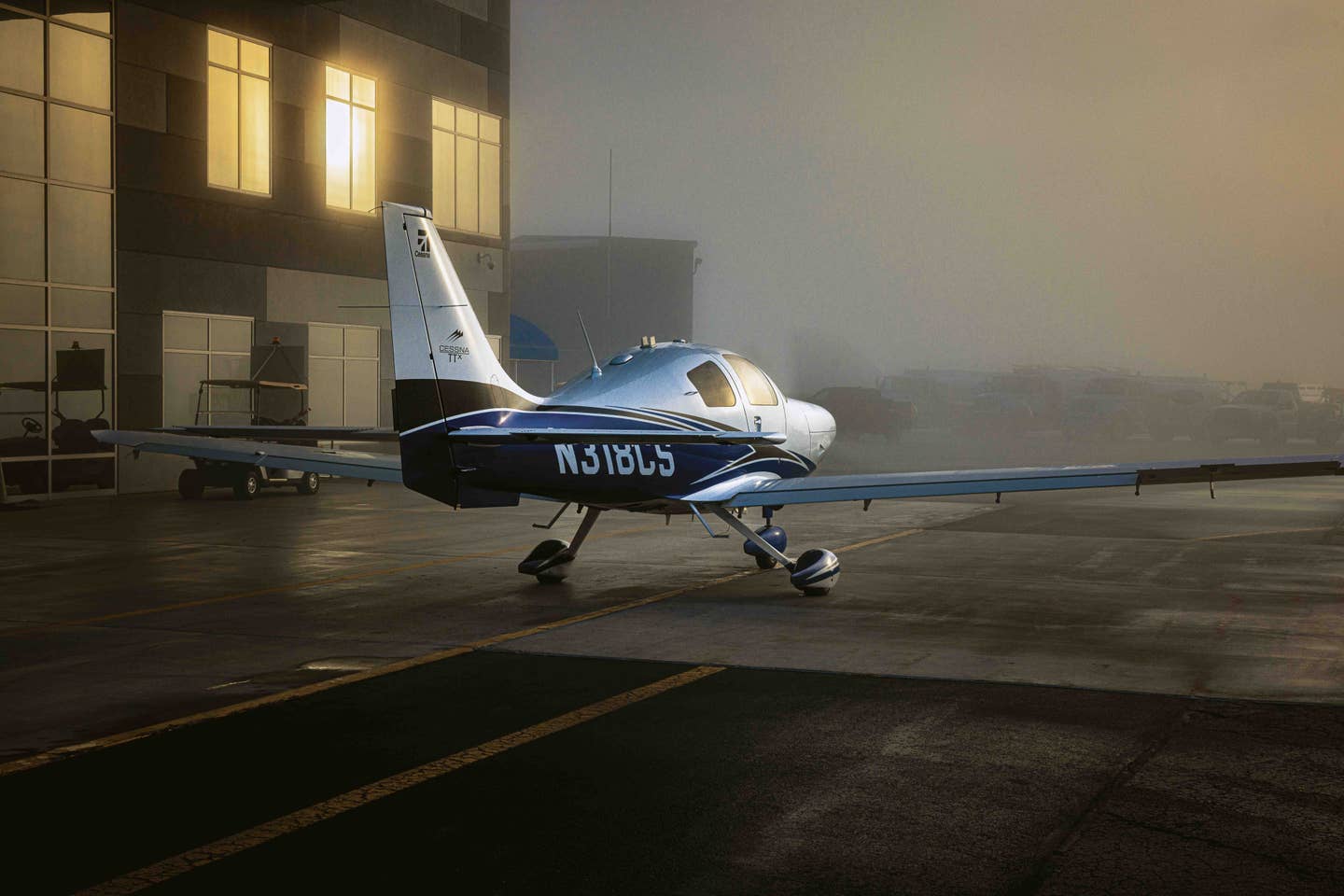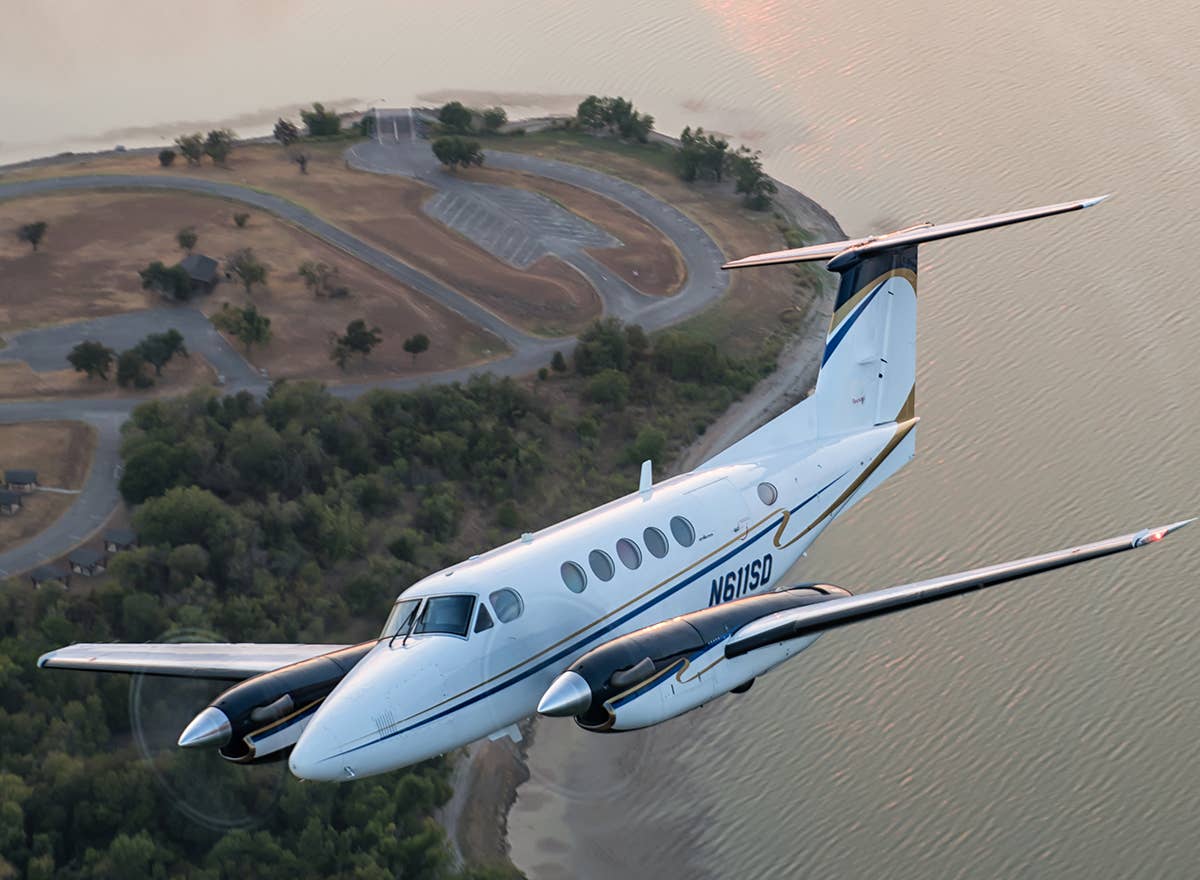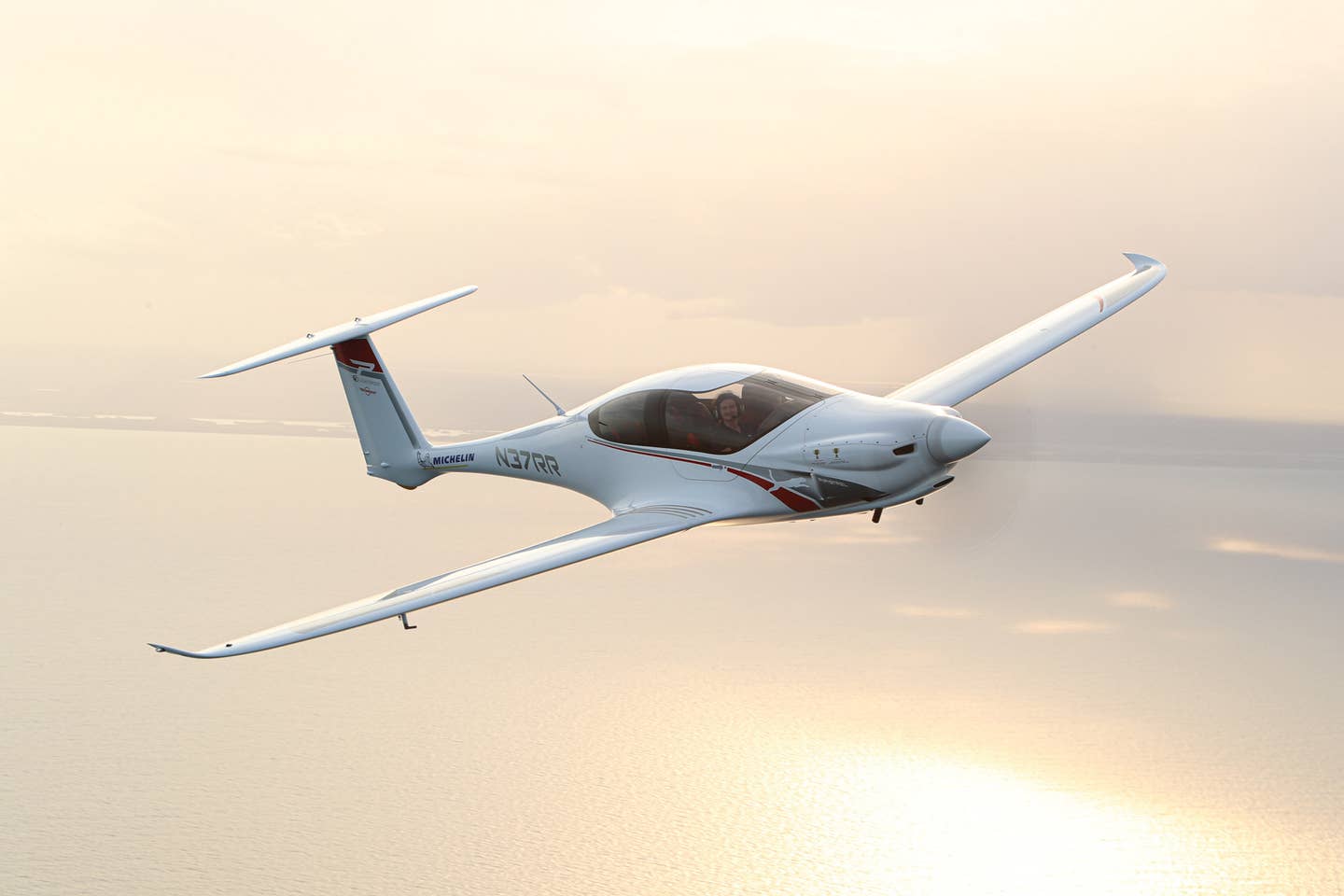
Panthera: The scientific name for the cat genus that includes tigers, lions, jaguars, cougars and leopards. Jim Barrett
Automobiles with gull-wing doors are rare. For me, a Mercedes-Benz 300SL immediately comes to mind. Aircraft with gull-wing doors—such as the Cessna TTx and Socata Trinidad—are even rarer still, so when I first saw the Pipistrel Panthera from a distance at Chicago’s Waukegan National Airport (KUGN), I knew this airplane was something special. The company’s heritage of gliders and drones built for minimum drag and maximum glide capabilities deserves a nod.
As I gently pulled open the Panthera’s gull-wing door and slipped into the front seat, I also realized that pilots who buy one of these won’t simply climb into the cockpit as much as they’ll wear the Panthera like a sort of superhero suit. It’s formfitting but with comfort like that of a well-designed sports car. Aircraft control is handled via dual control sticks between the pilot’s and front passenger’s knees.
The Panthera’s main doors are hinged at the top of a 6-inch-wide bar that runs fore to aft over the center of the 47-inch-wide cockpit. There’s a separate center-hinged door on the left side for rear-seat passengers. Gently pull down the doors, and the view becomes truly impressive—because other than the center post, all the pilot sees is the great outside, from straight ahead to nearly the tail feathers and even above. The nose is long when viewed through the raked windshield, which could be a problem for the most vertically challenged aviators to see over; the seats move very little fore and aft. Those seats are beautiful, though, with integrated headrests. The seats don’t recline, however, because they are already canted back.
The Panthera’s radical appearance certainly makes it look like a next-generation GA aircraft. Its smooth, sleek appearance seemed about as radical to me the day I first saw it as did a Cirrus SR20 15 years ago, when I compared it then with a Cessna 182. Kneel in front of the Panthera and it’s clear the fuselage is as clean a design as most pilots have ever experienced. There are no flap tracks hanging in the breeze from this airplane, and there’s not a gap seal anywhere in sight. Even the exhaust system has been specially tuned for maximum power and minimum noise.
Production Pantheras will be built to Part 23 standards that include an all-composite, mainly carbon-fiber structure—with very few access panels—covered in Kevlar for added passenger protection. The airframe is designed to be as maintenance-free as possible, with permanently lubricated push-rod tubes actuating the ailerons and elevators. The rudder is cable-operated and requires occasional lubrication. Currently powered by a 260 hp Lycoming IO-540-V4A5, Pipistrel says the Panthera will cruise at nearly 200 knots at 75 percent power, a few knots more than a late-model Mooney Ovation—and the Mooney uses a 300 hp engine. Standard on the Panthera is a specially designed German MT propeller. Panthera specs cite a range of 1,000 nm and a maximum certified ceiling of 25,000 feet. For readers doing their own research, there is an experimental version of the Panthera in Europe, but that model will not be available in the US.
The Panthera includes trailing-link landing gear created from titanium and includes 11 doors that seal out just about every possible performance-stealing air gap. The emergency gear extension sits between the two front seats under the center armrest.
The flaps are electric with just two operational settings: 15 and 45 degrees. Standard fuel capacity on the Panthera is 54 gallons. Optional tanks will add another 20 gallons per side, but that will cost about 240 pounds of the airplane’s significant 1,100-pound useful load. The Panthera weighs 2,900 pounds at gross, about the same as a Cirrus SR20 and a few hundred pounds less than a Mooney Ovation.
The panel includes a bevy of avionics that equip the Panthera for serious IFR flight (flight-into-known-icing capabilities are in the works). They include a Garmin G3X touchscreen primary flight display (a second G3X is an option), a touchscreen GTN 750 Com/Nav/IFR GPS, a GTN 650 second Nav/IFR GPS, and a two-axis GPS slaved digital autopilot. Mid-Continent Instruments’ Standby Attitude Module (SAM) provides backup airspeed, altimeter and attitude indications.
The Panthera’s standard equipment will include a GRS emergency parachute system that requires repacking every nine years, very similar to other airframe-chute-equipped aircraft. A big difference is this chute’s deployment speed—195 knots versus 140 knots on the Cirrus. Pipistrel believes its chute offers an additional selling point, according to Andrew Chan, co-founder of Right Rudder Aviation in Inverness, Florida. “The cost to repack a Cirrus aircraft chute is roughly $12,000,” he said. “The repack on the Panthera is expected to cost closer to $5,000 with a downtime of approximately two days.” Right Rudder is the sole Panthera dealer in the U.S.
A Little History Yields a Few Answers
Chan offered me some Panthera history before we launched from KUGN. Our demonstration airplane, N37RR, is the only assembled Panthera in the US as of press time. The Panthera has not yet been certified by either the European Union Aviation Safety Agency or the FAA. A target for that action is currently late 2022 or early 2023. But the genesis of the Panthera was actually in 2012. So, if the Panthera was first conceived nearly 10 years ago, the logical question is: Why is the airplane just now beginning to see daylight?
Chan said he hears that question quite often. Something that slowed the Panthera’s development was “a design change,” he said. “Pipistrel initially launched the Panthera with a Lycoming IO-390 normally aspirated powerplant but always wanted the aircraft available with two engines, the IO-390 and the more powerful IO-540.” Chan said the original design was to create the ultimate personal-aircraft brand with specific performance guidelines, such as a 1,000 nm range, an 1,100-pound useful load and a top speed of 200 knots—and all while burning 10 gallons per hour. “And they got really close,” he added. “So, it’s not quite 10 [but] 10.8 gph. It’s not quite 200 knots; it’s more like 185, but I think those are still very respectable numbers. The useful load is, in fact, 1,100 pounds, and the Panthera will fly [to its] 1,000 nautical mile range with the optional extended-range tanks.”
Another early requirement was for the engine to use automotive fuel because avgas is often tough to come by outside the US. Lycoming promised a supplemental type certificate for the IO-390 that never materialized, so Pipistrel decided to offer only the six-cylinder IO-540. Chan said: “The [normally aspirated] IO-540 produces 50 more horsepower [260 hp total] than the IO-390. When connected to the three-blade MT constant-speed designed specifically for this airplane, it drastically changed the rate of climb to a very respectable climb rate of 2,000 fpm on a cold day.” He says Pipistrel has also been planning for an electric version of the Panthera in the future. While an engine switch might not seem like a huge hurdle, the designers realized a new engine would require a new cowling in order to make sure the airplane’s performance did not suffer, especially from any cooling issues. The amount of time devoted to the redesign was worth the effort because, Chan said, it’s impossible to shock-cool the engine during a descent, a feat other manufacturers can’t match.
- CHECK OUT OTHER REVIEWS: Previous editions of "We Fly"
When comparing aircraft performance, the differences between individual powerplants are worth noting, and all vary by local conditions. The Panthera’s Lycoming delivers 260 hp, the Cirrus SR22 310 hp, and the late-model Mooney 300 hp. Panthera specs show a cruise speed of about 198 knots, while the SR22 cruises at about 183 knots and the Ovation at about 170 knots with variations for altitude and OAT. The Mooney and Panthera typically burn less than 14 gallons per hour—while the Cirrus is using closer to 18 gph.
While many pundits compare the Panthera to a Cirrus SR22, Tine (pronounced “Tea-neh”) Tomazic, one of the three Pipistrel R&D engineers in Slovenia behind the Panthera, says the airplane was never designed as a “Cirrus killer.” “It’s built for a different type of aviator. The Panthera was always aimed to fit somewhere between a Diamond DA40 and a Cirrus. A better comparison, by mission, might be to think of the Panthera as a modern-day Mooney. It doesn’t need to fly at extremely high altitudes to go fast. It’s not built for a truck driver who has a side stick in their hands and mostly flies on the autopilot. I heard someone call a Cirrus a dependable machine, like a Toyota Camry. But someone who really enjoys driving on a curvy road might want an Audi A6. We see the Panthera coexisting quite nicely alongside Cirrus but catering to pilots who really enjoy stick-and-rudder flying.”
But who is going to spend the money for a Panthera performance machine if they can’t have it for a few years? Chan said, “Some customers are already Cirrus owners who will keep their airplanes until their Panthera arrives.” So far, Pipistrel says it holds 150 Panthera orders.
Going Airborne
I was itching to feel how the Panthera performed. The day Andrew Chan and I flew, we were well under gross with about half fuel and just the two of us on board. The OAT was about minus 5 degrees Celsius under clear skies. Once the preflight was complete, I climbed aboard and gently pulled down the door. Chan reminded me again that unlike some airplanes, locking the Panthera’s door did not require slamming it into place. As I familiarized myself with the cockpit, there was no doubt this airplane comes with a sports-car-like interior environment. It’s a clean design with everything clearly laid out: landing-gear handle and lights above my right hand just beneath the glare shield, flaps farther right, and backup flight instruments in between with autopilot controls just beneath. All circuit breakers are positioned to the far right on the instrument panel and are easily visible. The large Garmin screens make information pretty easy to gather, assuming the pilot is familiar with the touchscreen system.
The Lycoming started after just a few spins of that big MT prop, and even with headsets on, the engine made a throaty sports-car sound. Once we were taxiing to Runway 22 at KUGN, I realized the cost of having that big overhead bar in the cockpit. The left-seat pilot’s view is blocked some as they execute a right turn, while someone taxiing from the right seat needs to be more cautious about left turns. Pilots with a little taildragger time should quickly feel at home looking over that long nose. I took me a bit to get used to the brakes with my feet firmly on the rudder pedals and using just the tips of my toes; though, I did find a sweet spot after a bit. The control stick makes a flight-control check simple. The stick also contains a top-hat trim button, an autopilot disconnect and a push-to-talk mic. After the first few minutes, there was no need to look down because it’s easy to simply feel the different shapes of the buttons.
At takeoff, the pilot must be ready to really steer the Panthera down the runway with the torque that the combination of the MT propeller and Lycoming engine delivers. It’s almost impossible not to feel when the Panthera is ready to fly, and once airborne with the gear up, the airplane began to show its colors. I trimmed for a 135-knot climb speed and quickly saw a 1,500 fpm climb as we headed west toward Fox Lake, a prominent landmark in northern Illinois. Climbing to 6,500 feet, I realized the Panthera required very little additional right rudder.
I waited to pull back the power at level off just to watch the acceleration. It was a cold day in December, but the indicated airspeed quickly rose into the yellow arc, which was my cue to haul back on the throttle. We settled on a less-spectacular 24 inches of manifold pressure that delivered 181 knots to see that promised 10.5-gallon-per-hour fuel burn. It didn’t take much additional power to see speeds above 190.
I never got around to trying the automation because someone was waiting back at Waukegan for the next demo, so I focused on air work. The Panthera is light on the controls, with almost an aerobatic feel. I could easily wrap it into a 45- to 50-degree bank to the left and one back to the right with ease. The visibility outside was at least 25 miles, while inside during the turns, it was easy to see the ground and back the other way toward the sky—and with the nearly wraparound windows, I could easily see behind us.
Before I knew it, Chan said it was time to head back to Waukegan. That’s when I learned an important lesson every Panthera pilot will need to embed in their mind early on. The Panthera has no speed brakes, so descending and slowing need to be planned in advance. Because I didn’t need to worry about shock-cooling that big Lycoming, Chan suggested I first advance the propeller to a high rpm and then pull back on the throttle. It still took time to slow the airplane because the gear-extension and flap speeds are quite low—106 knots to be exact. Pilots will need to plan far ahead, especially if they’re inbound on an instrument approach. Once established on downwind at 90, I added flaps until turning final when I slowed to 80 knots. As I approached the runway, I continued slowing, crossing the end at about 75, about the same speeds used in the Cirrus. My only Panthera landing was smooth—thanks in part to that trailing-link gear.
The Panthera is an exciting airplane for the serious pilot who wants to feel what they’re flying, as Tomazic says. The purchase of a Pipistrel Panthera requires access to an app that coverts euros to dollars because the European currency is primary for all transactions. A deposit will set a pilot back 50,000 euros, or roughly $58,800 at press time. That deposit is fully refundable until about six months before the aircraft is delivered from Pipistrel’s factory in Italy, not far from the primary engineering facility in Slovenia. The latest price on a basic Panthera is about $700,000. Options include extended-range tanks, oxygen, air conditioning, FIKI deice and upgraded stitching on the seats. Choosing all these options will bring the price closer to $900,000.
And the Panthera still needs to earn its EASA and FAA certification, but for those with the patience to wait—wow, what a performer this airplane will be.
Pipistrel Panthera Specifications
| Price (as tested): | about $900,000 | ||
| Engine: | Lycoming IO-540V-V4A5 | Propeller: | MT three-blade constant-speed composite |
| Horsepower: | 260 hp | Seats: | 4 |
| Length: | 26 ft. 6 in. | Height: | 7 ft. 2 in. |
| Cabin Width: | 3 ft. 11 in. | Wingspan: | 35 ft. 8 in. |
| Power Loading: | 11.15 lb./hp | Max Ramp Weight: | 2,900 lb. |
| Useful Load: | 1,100 lb. as equipped | Full Fuel Payload: | 770 lb. as equipped |
| Max Usable Fuel: | 54 gal. with 40 gal. optional long-range tanks | Max Operating Altitude: | 25,000 ft. |
| Rate of Climb: | 1,300 fpm at max gross weight | Cruise Speed at 65% Power: | 185 knots at 7,500 ft. |
| Maneuvering Speed: | 143 kias | Never-Exceed Speed: | 220 knots |
| Fuel Burn: | 13.6 gph at 75% power at 7,500 ft. | Fuel Burn: | 10.8 gph at 55% power at 7,500 ft. |
| Stall Speed, Flaps Up: | 60 kias | Stall Speed, Full Flaps: | 55 kias |
| Takeoff Over 50 Ft. Obs: | (ISA, sea level) 2,155 ft. | Landing Over 50 Ft. Obs: | (ISA, sea level) 1,135 ft. |
Training in Type
As the only Panthera dealer in the US, Right Rudder Aviation has a unique role with the Panthera. Not only are they responsible for selling the aircraft, but RRA is also responsible for all pilot training and maintenance at the moment. Understanding the ups and downs other companies faced when introducing a new aircraft, Chan says Pipistrel thought long and hard about what it would require before pilots were let loose with this cat.
What makes or breaks an aircraft launch is how the marketplace sees it. What stood out to the Pipistrel folks, Chan says, was that “Cirrus could have done better on training” when it launched the SR20 and SR22 series. The Cirrus accident record early on was not pretty. Chan says: “Our roots come from the flight training industry [at RRA]. When we have a client training with us…we want them to go home to their family at the end of the day. So, safety is super, super key for all of our students—but also for the success of the aircraft ultimately.” Pipistrel has taken the unusual step of requiring an extensive transition-training commitment from everyone who signs a purchase contract.
“It’s a two-week, 25-flight-hour, in-depth program akin to a type rating,” Chan says. “We believe that will help ensure the success of the airplane. It runs…eight hours a day and includes lots of classroom time and lots of hands-on time with the aircraft.” Chan says with a clientele of high-net-worth individuals, he expected pushback such as: “Hey, why do I need to do that?” But Pipistrel is taking a hard stand on training. “If someone says, ‘I already know everything, I don’t need any additional training,’ we tell them thanks, but they’re not a client for the Panthera.” Except for the room and board near the Inverness training facility, the cost is included with the purchase.
As for the curriculum, Chan says the FAA dictates the required pilot skills through the airman certification standards. “But people who train beyond the minimums will improve their efficiency.” He says the price of not teaching beyond the minimums is much greater than two weeks of training. The classroom portion will dive deeply into aircraft systems as well as the intricacies of the Panthera’s sophisticated avionics. “Pilots typically use 25 percent of what the avionics system can display. Because we’re also a maintenance organization, we’ll open up the airplane to show owners what is connected to what.” Though the Panthera is not certified for spins, RRA intends to take new pilots through upset-prevention-and-recovery training in a different aircraft. Chan also says, “Insurance underwriters are exceptionally excited about [our training program] because they believe it will help reduce accidents and incidents.”
This story appeared in the June/July 2021 issue of Flying Magazine

Subscribe to Our Newsletter
Get the latest FLYING stories delivered directly to your inbox

